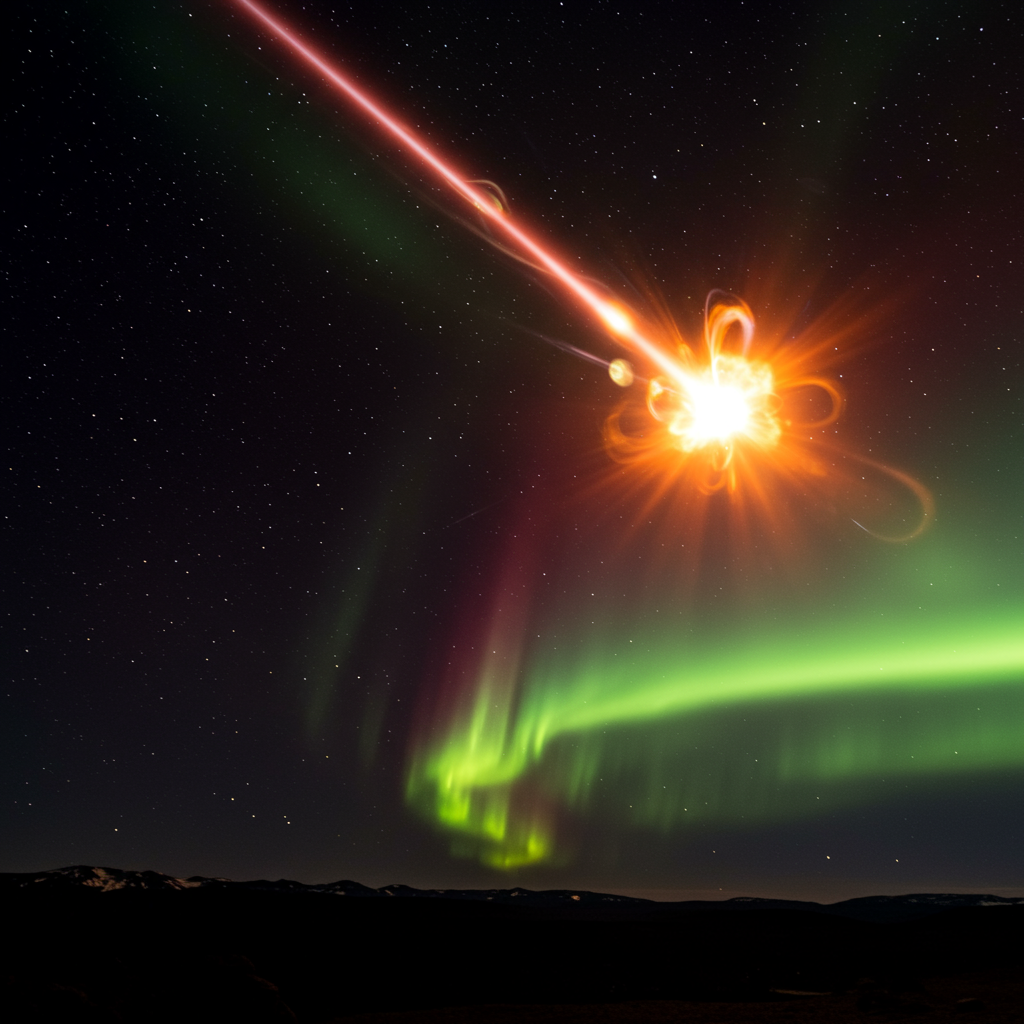Earth is spinning faster than it has in decades, prompting scientists to predict that the shortest day in recorded history could arrive within weeks. This unexpected acceleration is currently unexplained, posing a fascinating mystery for researchers and potentially impacting global systems that rely on highly precise timekeeping.
Since 2020, our planet has been rotating slightly quicker than expected. This recent speed-up contrasts sharply with the long-term trend of earth’s rotation gradually slowing down. Over millions of years, the gravitational pull of the Moon has created tidal friction, acting like a brake on Earth’s spin and steadily increasing the length of our days. Billions of years ago, a day might have been only a few hours long. Now, scientists are observing the opposite – a mysterious quickening.
Why Earth’s Spin is Speeding Up (And Why It’s a Mystery)
The cause behind the current, sudden acceleration remains a puzzle. Experts like Leonid Zotov from Moscow State University have openly expressed surprise, stating, “Nobody expected this, the cause of this acceleration is not explained.” While various natural phenomena are known to influence Earth’s rotation, none fully account for the significant trend observed since 2020.
Scientists are exploring several potential factors that could be at play deep within and around our planet. The movement of Earth’s molten outer core is a primary suspect. This vast ocean of liquid metal swirling around the solid inner core can shift its mass distribution, much like a figure skater pulling in their arms to spin faster. Changes in this internal dynamic could slightly alter the planet’s shape and balance, thereby affecting its rotation speed.
Forces on the planet’s surface also play a role, though typically on a smaller scale. Large masses of fluid, like ocean currents and powerful high-altitude winds (jet streams), constantly move across the globe. These shifts in atmospheric and oceanic mass can cause minor fluctuations in Earth’s spin. Even major geological events, such as large earthquakes, can have a measurable effect; the 2011 Japan earthquake, for instance, reportedly shifted Earth’s axis slightly and shortened the day by microseconds by rearranging crustal mass.
While factors like melting glaciers or large weather patterns such as El Niño can contribute to minor rotational changes, current models of atmospheric and oceanic behavior do not explain the sustained acceleration observed over the last few years. This has led many researchers to believe the answer might lie “inside the Earth,” pointing towards complex, poorly understood processes within the core or mantle.
Predicting the Potential Shortest Days
Astrophysicist Graham Jones of the University of London is among those predicting that the ongoing acceleration could lead to new record-short days very soon. Based on tracking data, he forecasts potential noticeable increases in Earth’s rotational speed on specific dates this summer.
Jones’s predictions highlight three possible dates for further acceleration in 2025:
July 9: Predicted shortening by 1.30 milliseconds
July 22: Predicted shortening by 1.38 milliseconds
August 5: Predicted shortening by 1.51 milliseconds
These numbers represent tiny fractions of a second, completely imperceptible to humans without highly specialized equipment. However, they signify a measurable departure from the standard 24-hour day. One hypothesis being explored for why these specific dates might see acceleration is their potential coincidence with periods when the Moon is furthest from Earth’s equator, a lunar position known to exert some influence on the planet, although this correlation is not confirmed as the direct cause.
Tracking Earth’s Fastest Days: The Evidence
Scientists precisely measure Earth’s rotation using incredibly accurate atomic clocks. These instruments track the “Length of Day” (LOD), comparing the planet’s actual rotation period to the standard 86,400 seconds (24 hours). These measurements, gathered by services like the International Earth Rotation and Reference Systems Service (IERS) and data analyzed from sources like the US Naval Observatory, confirm the recent trend.
Since 2020, Earth has indeed been setting new records for the shortest days. This marks a clear reversal of the decades-long pattern of gradual slowing.
Notable recent record-breaking days include:
July 19, 2020: A day was 1.47 milliseconds shorter than 24 hours.
July 9, 2021: Another day measuring 1.47 milliseconds short.
June 30, 2022: This day was 1.59 milliseconds shorter, setting a new record at the time.
July 5, 2024: Currently holds the record for the fastest day, spinning 1.66 milliseconds quicker than the standard.
While 2023 saw a slight slowdown in the acceleration trend without setting new records, data from 2024 showed the speed-up resumed, making it the year with the most consistently short days measured. The precision of atomic clocks allows scientists to monitor these subtle shifts with remarkable accuracy.
More Than Milliseconds: The Impact on Technology and Time
While a millisecond might seem insignificant in daily life, it’s crucial for many modern technologies. Global systems rely on incredibly precise time synchronization. Satellite networks, including GPS navigation systems, communication networks, and even financial markets, function by coordinating events down to fractions of a second.
Our global time standard, Coordinated Universal Time (UTC), is maintained using atomic clocks. It occasionally needs adjustment to stay aligned with Earth’s slightly variable astronomical time. Historically, because Earth was gradually slowing, ‘leap seconds’ were sometimes added to UTC to keep everything in sync.
However, if Earth’s current acceleration continues, timekeepers could face an unprecedented challenge. They might need to implement a ‘negative leap second,’ effectively subtracting* a second from UTC for the first time in history. This would be a complex technical maneuver with potential disruptive effects on sensitive digital systems that aren’t designed to handle time moving backward or suddenly skipping a second. Scientists are carefully monitoring the situation and discussing potential solutions should a negative leap second become necessary.
The Ongoing Scientific Mystery
For now, the primary focus for scientists is understanding the exact cause of this mysterious acceleration. Researchers are pouring over data from Earth rotation services, seismology, and atmospheric science to try and find a definitive answer. The question remains whether this is a temporary anomaly caused by a specific, perhaps short-lived, geophysical event or if it signifies a longer-term shift in Earth’s behavior.
Experts anticipate that, eventually, Earth will decelerate again due to the Moon’s persistent braking effect. But the timing of this future slowdown is just as unknown as the cause of the current speed-up. Until the mystery is solved, scientists will continue tracking the planet’s subtle but significant shifts, watching closely for the possibility of a record-breaking shortest day occurring sooner than expected.
Frequently Asked Questions
Why is Earth’s rotation speeding up unexpectedly?
Scientists are currently puzzled by the sudden acceleration in Earth’s spin, which began around 2020. This goes against the long-term trend of slowing down due to the Moon’s gravity. While factors like the molten core’s movement, ocean currents, and atmospheric winds can cause minor changes, none fully explain the significant recent speed-up. Experts believe the cause likely lies within complex processes deep inside the Earth that are not yet fully understood.
How do scientists measure Earth’s rotation changes, and what dates are predicted to be shortest?
Scientists use highly precise atomic clocks to measure tiny variations in the “Length of Day” (LOD). These clocks track how long it takes Earth to complete one rotation, comparing it to a standard 24 hours (86,400 seconds). Astrophysicist Graham Jones has predicted that, based on current trends, potentially record-breaking shortest days could occur on July 9, July 22, or August 5 in 2025, possibly shortening the day by 1.30, 1.38, or 1.51 milliseconds respectively.
What are the potential impacts of Earth’s faster spin on technology and timekeeping?
Even millisecond changes in Earth’s rotation can affect technologies that require extreme precision, such as GPS satellites, global communication networks, and financial trading systems. These systems rely on Coordinated Universal Time (UTC), which is synchronized with atomic clocks. If the speed-up continues, timekeepers may need to implement an unprecedented ‘negative leap second’ – subtracting a second from UTC – to maintain synchronization, a step that could potentially cause technical disruptions.
Conclusion
Earth’s unexpectedly accelerating rotation presents a compelling scientific puzzle. The prospect of setting a new record for the shortest day in history within weeks highlights the dynamic nature of our planet and the subtle forces constantly at work. While the exact cause remains a mystery, the ongoing research underscores the intricate connection between Earth’s internal processes, external forces, and the precise measurement of time that underpins our modern technological world. Scientists will continue monitoring this fascinating phenomenon, seeking answers to why our planet is suddenly in such a hurry to spin.




